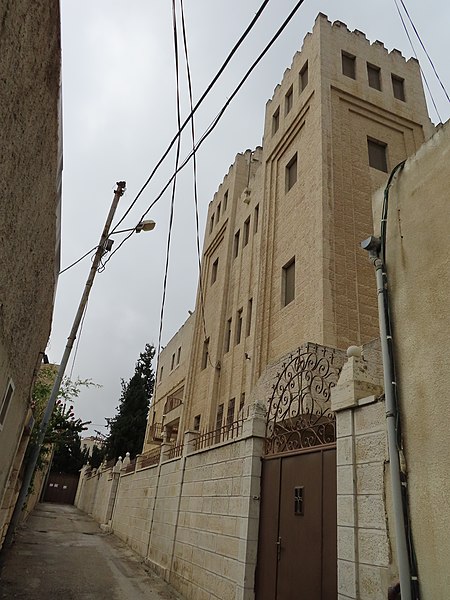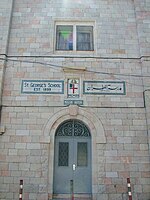Church of Saint Thomas, Jerusalem
Assyrians in IsraelCathedrals in JerusalemChurches completed in 1986Eastern Catholic cathedrals in IsraelEastern Catholic cathedrals in the State of Palestine ... and 2 more
Eastern Catholic church buildings in JerusalemSyriac Catholic cathedrals

The Church of Saint Thomas (Latin: Ecclesia Sancti Thomae) is a Syriac Catholic church building located in the city of Jerusalem in the Holy Land. It serves as the cathedral and headquarters of the Syriac Catholic Patriarchal Exarchate of Jerusalem. The exarchate moved several times and is now at the House of Abraham (French: Maison d'Abraham) at Ras al-Amud in East Jerusalem.
Excerpt from the Wikipedia article Church of Saint Thomas, Jerusalem (License: CC BY-SA 3.0, Authors, Images).Church of Saint Thomas, Jerusalem
Chaldan 6, Jerusalem Bab a-Zahara
Geographical coordinates (GPS) Address Nearby Places Show on map
Geographical coordinates (GPS)
| Latitude | Longitude |
|---|---|
| N 31.7847 ° | E 35.2284 ° |
Address
Chaldan 6
Chaldan 6
9119001 Jerusalem, Bab a-Zahara
Jerusalem District, Israel
Open on Google Maps









